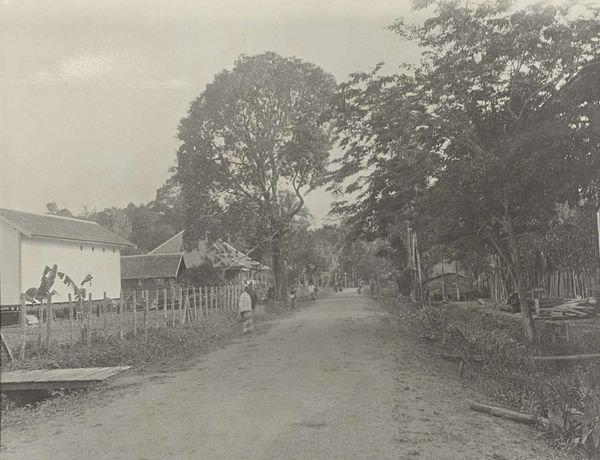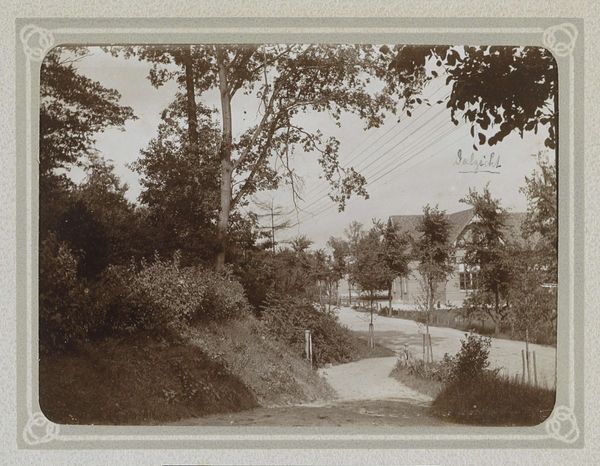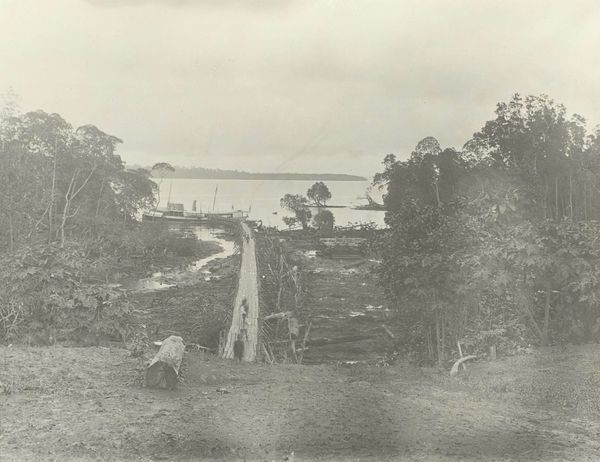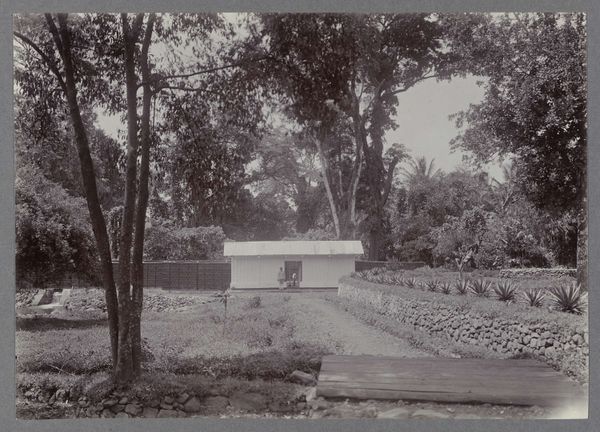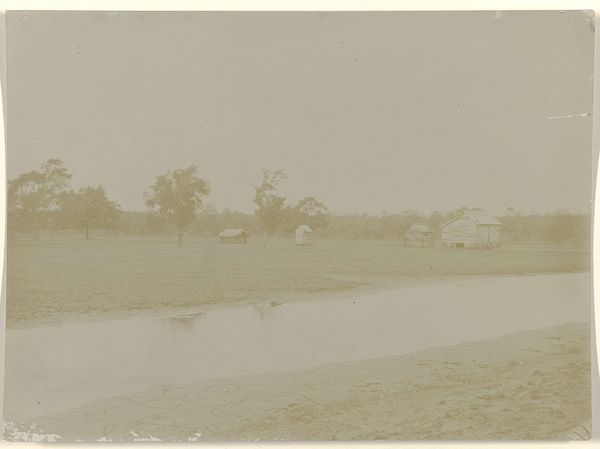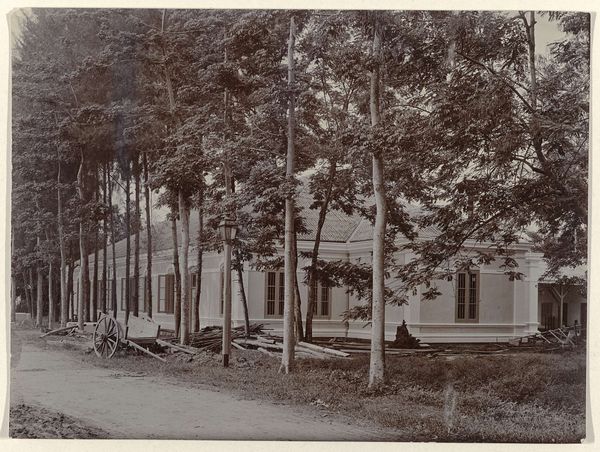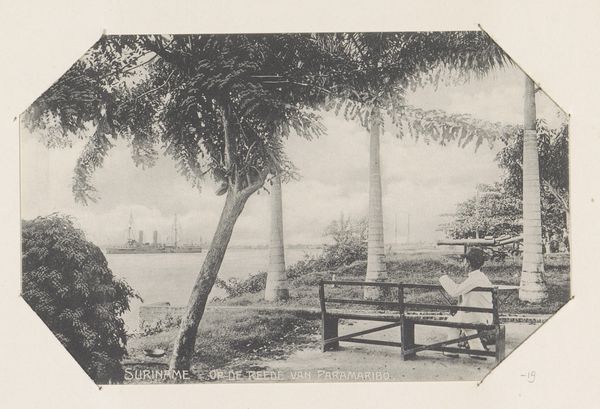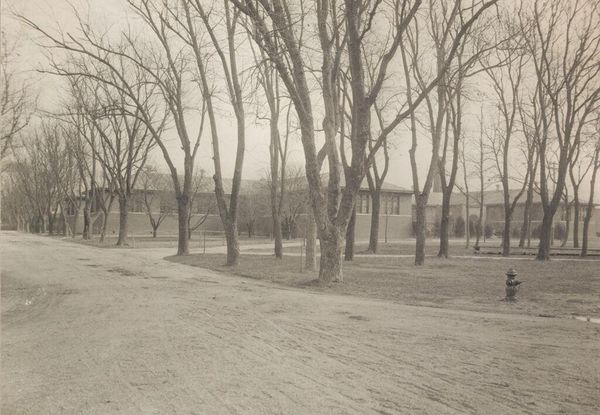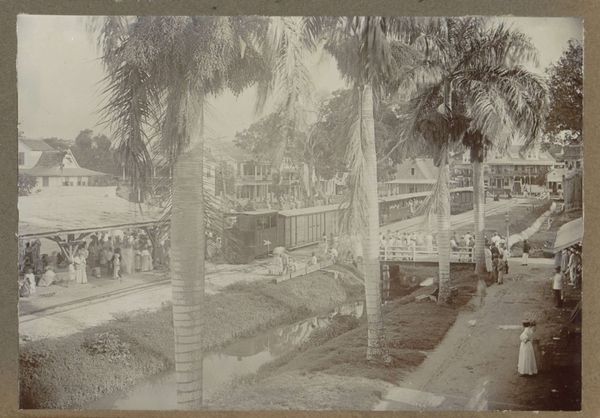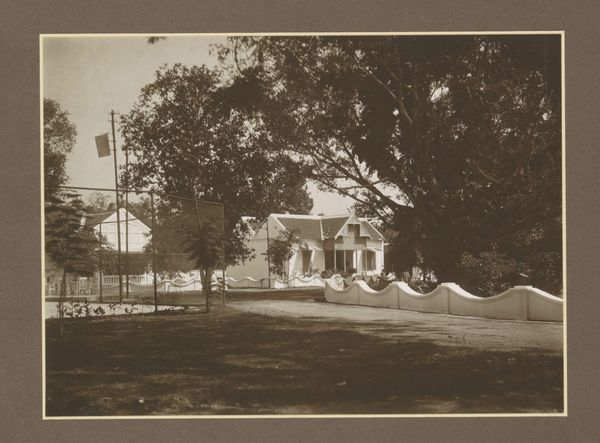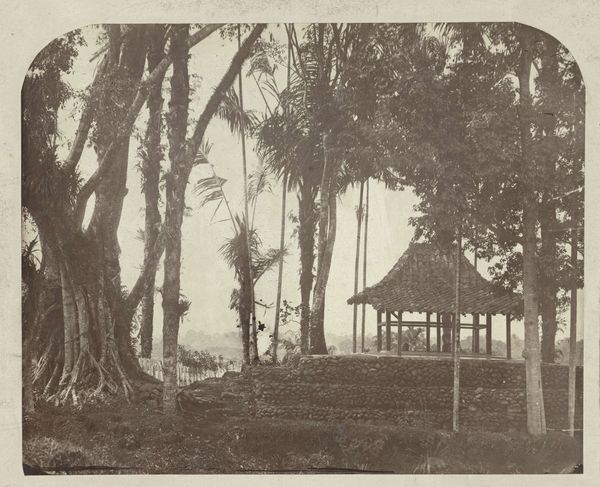
photography, gelatin-silver-print
#
pictorialism
#
landscape
#
photography
#
gelatin-silver-print
#
genre-painting
#
realism
Dimensions: height 280 mm, width 215 mm, height 385 mm, width 440 mm
Copyright: Rijks Museum: Open Domain
Curator: This gelatin silver print, "Weg door een dorp aan het water," or "Road Through a Village on the Water," likely taken between 1903 and 1907, presents us with a tranquil waterside scene. The horizon fades into a hazy distance. Editor: It has a definite dreamlike quality. The soft focus lends this sense of detachment. Almost as if it is frozen in time. What I find striking is how indistinct the human figures are. Do you see how they line the path, blurred? Are they even inhabitants or part of the scenery? Curator: Interesting you point that out! The style is consistent with Pictorialism, emphasizing artistic effect and atmosphere over sharp detail, as you mentioned. Now, note how this approach could be symbolic too. These hazy representations of people and location may indicate larger sociological elements at work. Editor: Exactly! The photographer may have been attempting to reflect on the rapidly altering realities of a people undergoing profound transition, perhaps caused by western incursion. It is important to keep the colonial history in mind during this time. Are these subjects resisting against or acquiescing to changing customs and beliefs? What are the stories in these obscured details? Curator: Those are important points for us to keep in mind. Consider also how the composition contributes. The road dominates the foreground, leading the eye into the hazy background and offering many different viewpoints. Symbolically, one might suggest that such roads invite multiple cultural crossings of power. Editor: Definitely. The photographic decisions—the focus, the hazy light—all seem intentional. They build an overall feeling, a visual representation of the period's collective anxieties and questions of authenticity. Curator: It certainly presents a poignant intersection of realism and subjective interpretation. This artistic direction asks us to ponder how historical moments take root in memory. Editor: Yes. Examining the historical context in conjunction with how a single work translates to memory gives us space to re-think historical representations of identity, place and political agency. Curator: Beautifully put! There's such depth here, both visually and historically, to spark conversation and challenge us to reconsider what is brought to the forefront when an artist engages with history and memory. Editor: Precisely, art has the profound power to not just reflect but to shape the direction in which conversations—and ultimately, movements—may take root.
Comments
No comments
Be the first to comment and join the conversation on the ultimate creative platform.
